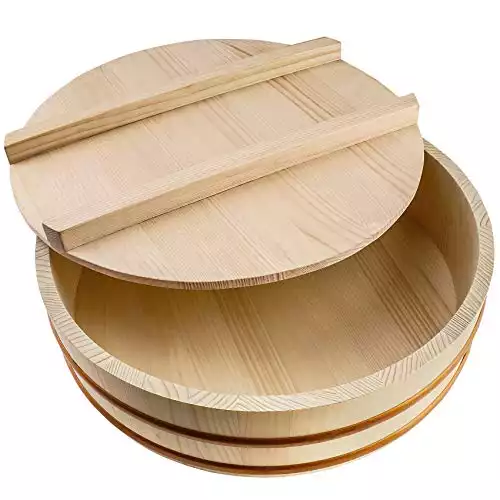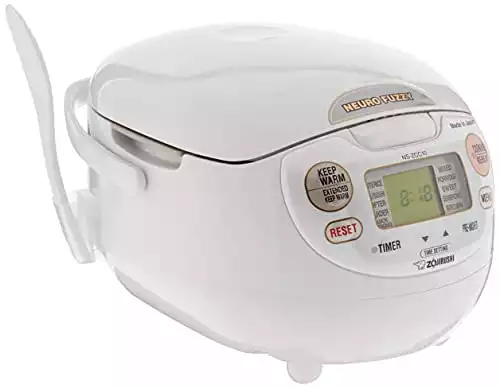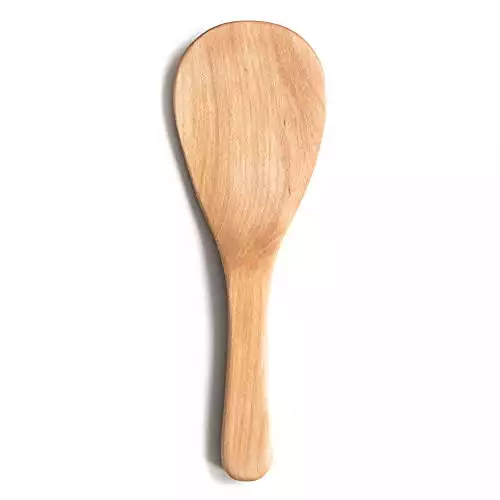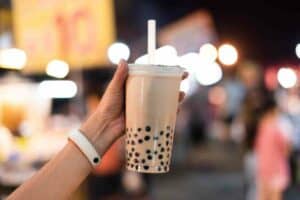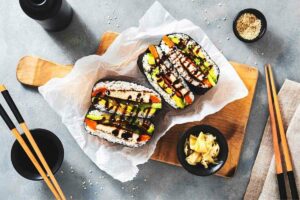Rice is a versatile staple in Japanese cuisine, but there is so much more to Japanese rice than sushi.
You’ll find Japanese rice being used in sweet and savory dishes, and even being fermented to produce sake (rice wine).
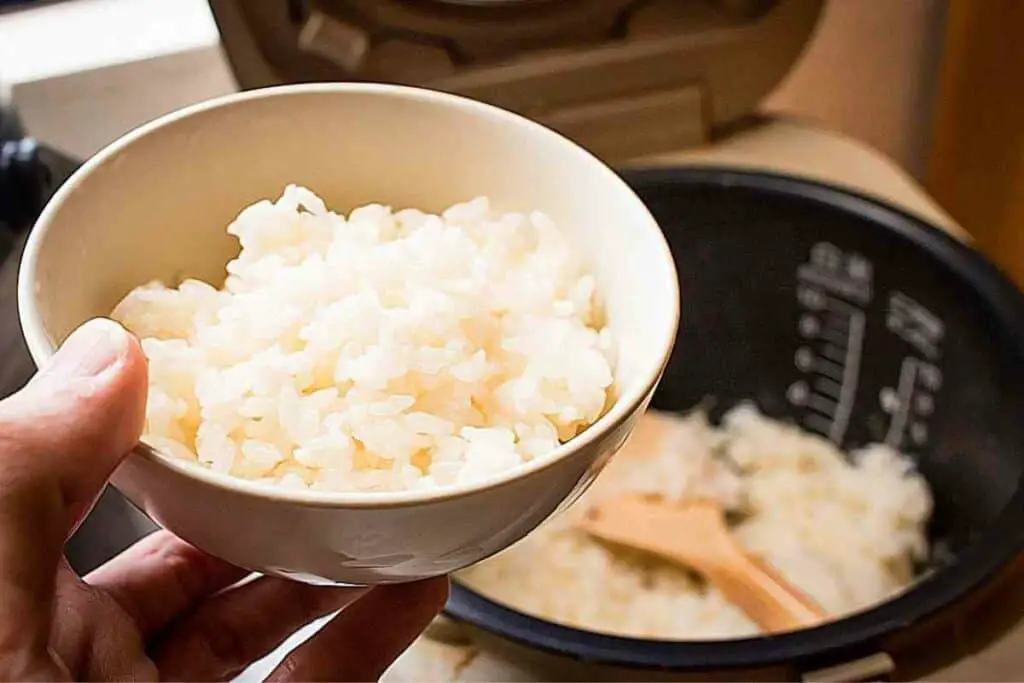
If you want to master Japanese cuisine, knowing how to cook authentic Japanese rice is a start.
In this article, we share how to make Japanese rice and sushi rice, including top tips and a neat rice cooker that will do the job for you!
Table of Contents
Here Is What You Need to Make Japanese Rice and Sushi Rice
|
4.5
|
4.8
|
4.2
|
|
$35.99
|
$217.70
|
$29.00
|
Types of Japanese Rice
If you want to cook an authentically Japanese dish, the regular American long-grain rice you pick up at the grocery store just won’t do.
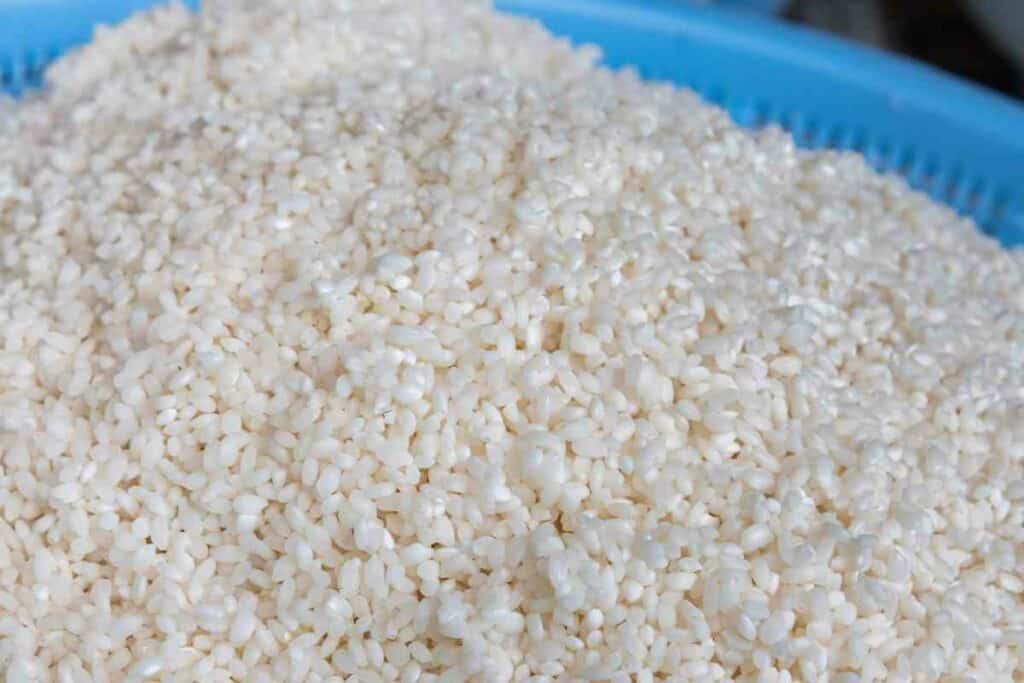
Japanese cuisine needs Japanese rice, which is limited to a group of short-grain Japonica or Sinica rice cultivars that are prevalent in Asia.
The Japanese eat two types of rice:
- Uruchimai (粳米): a local short-grain rice variety with translucent grains that become sticky when cooked. This is the rice that is used to make sushi, onigiri, rice vinegar, and sake. If you pick up a bag of sushi rice, you’ll be getting uruchimai!
- Mochigome (もち米): glutinous rice used in desserts and sweet snacks like mochi. The very short, round, and opaque grains become extremely glutinous when cooked, thanks to their low amylose content. Dishes that use mochigome have a satisfying firmness and chewiness.
Japanese rice cultivation
Rice has been farmed in Japan for several thousand years.
The isolation of the islands and the traditional cultivation techniques used by farmers has led to the development of several esteemed cultivars, each with its unique characteristics and taste including
- Koshihikari: one of the most favored Japanese rice varieties.
- Akitakomachi: another popular rice cultivar from Japan.
- Sasanishiki: a rice variety that is known for its pleasing taste when cooled.
- Yamada Nishiki: famous rice that is grown exclusively for sake production.
- Oborozuki: A cold-hardy rice variety that is grown in Hokkaido.
Japanese rice varieties are increasingly being cultivated overseas in Australia and the West Coast of the US having notable farming operations for Japonica rice.
Japanese rice processing
Japanese rice is harvested as brown rice, known as genmai (玄米), however, it is not routinely eaten as brown rice. The vast majority of Japanese rice is polished and sold as white rice which is called hakumai (白米).
A specialty dish involves germinating brown rice to create a soft, fragranced rice known as GABA rice. A partially milled Japanese rice variety called Haigamai is also available.
In rural Japan, farmers can process their rice using coin-operated polishing machines. The rice bran is used to create rice bran oil.
In the cities, shoppers are more likely to opt for bags of ready-polished rice, or no-wash or ready-to-cook rice known as musenmai (無洗米).
Preparing Japanese rice
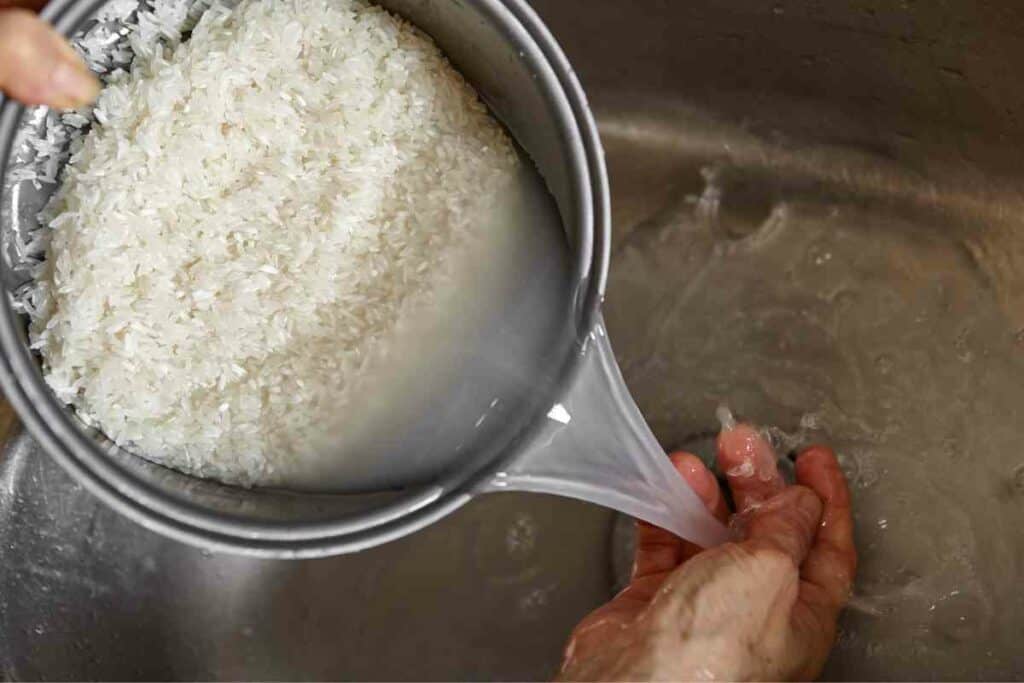
Rice is so foundational in the Japanese diet that you have to get it right. If you’re used to microwaving rice or cooking boil-in-the-bag rice – you’re in for a surprise.
The Japanese still hold to the old-school multistep preparation of rice that your grandmother or older relative may be familiar with.
Here are the steps to follow to ensure that your Japanese rice is satisfyingly fluffy and sticky:
1. Rinse the rice
Do not skip this step. Rinsing is essential to remove the excess starch and protein in Japanese rice.
For sushi rice and other dishes that use uruchimai, you want your grains to be separate. If you skip rinsing you will end up with a glutinous blob!
Place your measured rice in a bowl and add water until it is covered by an inch or two of water. Swirl the rice in the water until it becomes cloudy.
Pour off the cloudy water and add fresh water to repeat the process. Your rice is ready to soak when the rinse water is clear.
2. Soak the rice
Show flair in your Japanese rice cooking by soaking the rice in clean water for approximately 30 minutes.
The Japanese soak their rice to ensure that moisture penetrates and softens the core of each grain. This gives a superior eating experience when the rice is cooked.
3. Cook the rice
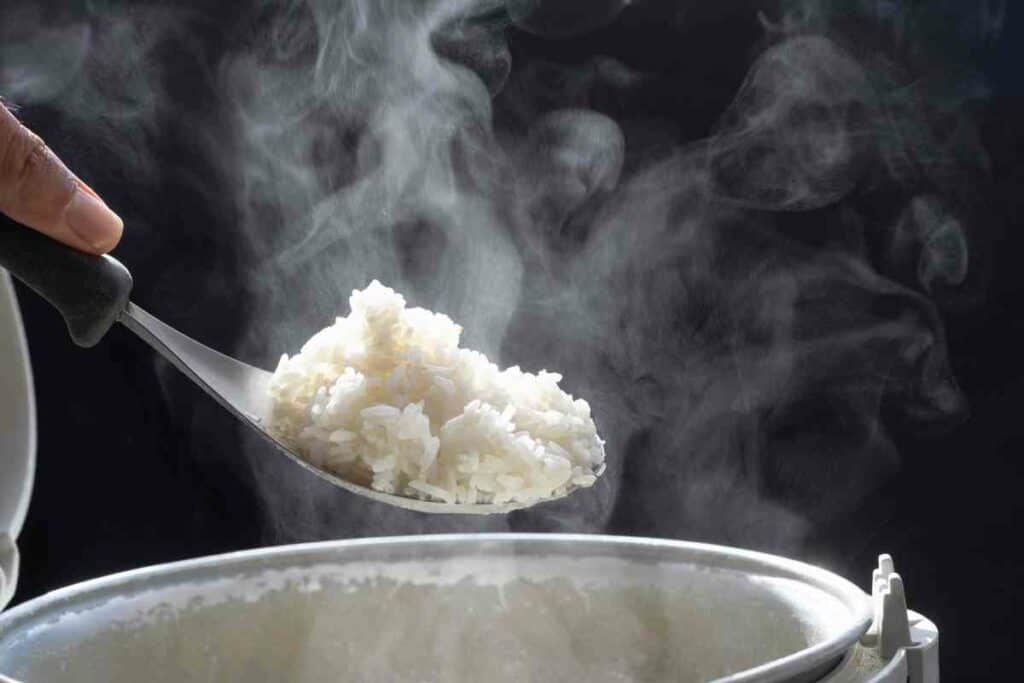
10 oz (300 grams) of Japanese rice should be cooked in 0.4 quart (360ml) of clean cool water. Cook the rice in a heavy-bottomed saucepan with a lid, bringing the rice to a boil.
Once the rice is boiling, turn down the heat to the lowest setting for approximately 12 minutes. Do not remove the lid.
4. Steam the rice
After cooking the rice on low heat, steam the rice for a further 10 minutes by turning the heat off and leaving the lid on.
5. Fluff the rice
Once the rice is cooked, the Japanese make a point of removing excess moisture and keeping the rice fluffy by fluffing it with a wood or bamboo paddle known as a shamoji.
This is a great utensil to have on hand if you are keen to do Japanese cooking. You can buy them online:
- Maple, cherry, or walnut wood rice paddle.
- Suitable for fluffing Japanese rice or adding vinegar to sushi rice.
Making sushi rice
If you’ve done a fantastic job with your Japanese rice cooking there are only a few steps further to transform the rice into the sticky, savory rice that is perfect for sushi-making.
The unique, appetizing flavor of sushi rice is down to the sweet rice vinegar that is added to the cooked rice.
Here is how to make the perfect rice for sushi making.
1. Prepare the rice vinegar
Sushi rice gets its taste and texture from the addition of sweetened rice vinegar.
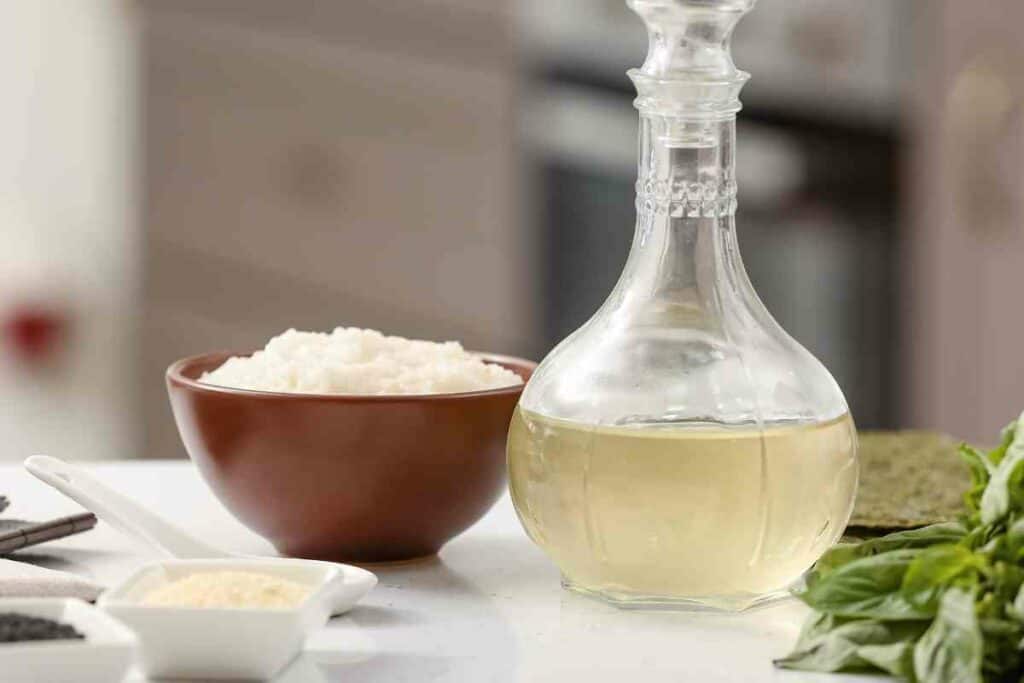
Your first job is to prep the vinegar by mixing it with salt and sugar.
Here are the principles of getting just the right tang:
- Use sushi vinegar and pour the equivalent in milliliters of 12% of the weight of the cooked rice you want to prepare.
- The best results are when the rice is warm. Place the rice in a wooden bowl called a hangiri.
- Pour in the sweetened vinegar and mix it in using your rice paddle. Ideally, the rice should be fanned while mixing the vinegar to aid moisture evaporation. Once the rice is cooled it can be used in sushi making.
A special wooden bowl called a hangiri is ideal for preparing sushi rice.
It may be sold individually or as a set with the rice paddle.
Here’s a great hangiri that you can buy for making sushi rice.
- Unstained polished white wood
- Multiple sizes are available
- Includes lid with handles
- Can also be used to season rice
Seasoning Japanese rice
Plain rice is a basic dish that is served at every table in Japan, but there is so much more you can do to add flavor, color, and texture to your Japanese rice.
Here are some popular seasonings that can be added to your rice while it is in a hangiri or at the dining table:
- Furikake (ふりかけ): This is a special Japanese rice seasoning that is a delicious combination of sesame seeds, katsuobushi, nori, and green seaweed flakes.
- Dashi: a classic, umami-rich Japanese stock.
- Mirin or sake: poured over the rice
- Soy sauce
- Sugar
- Pickles
Got left-over Japanese rice?
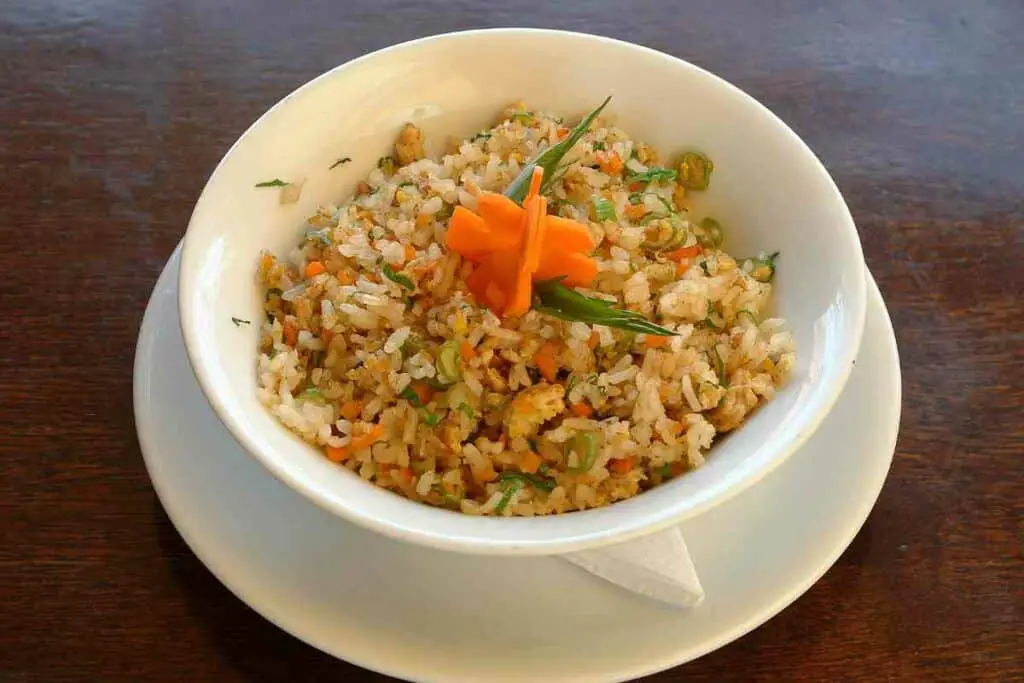
You can create some Japanese classics that make a quick, easy, and delicious meal.
Why not try:
- Chazuke (茶漬け, ちゃづけ): this is simply rice prepared with green tea poured over it. It can be garnished with some nori, umeboshi, salted or dried fish, or wasabi.
- Fried rice (Yakimeshi): This is a typical egg fried rice with veggies and scallions, but using short-grain Japanese rice.
Shortcut: You can always use a Japanese rice cooker!
It’s no surprise that the Japanese have the technology of getting perfectly cooked rice in a cooker.
And yes, every Japanese household has one. So if you are serious about Japanese cuisine and make a lot of sushi, onigiri, or donburi, it is well worth investing in a decent rice cooker.
One of the best brands for Japanese rice cookers is the Japanese company Zojirushi.
Here is one of Japan’s most popular rice cooker models that come with a rice paddle and measuring cups. It does everything except washing the rice for you – you cannot escape that!
- 5.5 cup capacity rice cooker specifically for cooking Japanese rice
- 11+ Japanese rice cooking programs including sushi rice and porridge
- Rice warmer function available
- Non-stick inner pan
Rounding Up
After reading this article, you should be a confident cook of Japanese rice.
There are so many dishes to try and of course, if you know how to make sushi rice, you will enjoy unlimited, hand rolls, sushi, rolls, and nigiri. So grab a bag of Japanese rice and enjoy the delights of sticky, fluffy Japanese rice!
- Bubble Tea vs Boba Compared: What’s the Difference?
- Best Izakaya Foods for a Relaxed Night Out (My Top 10 Picks)
- Edo Kiriko Whiskey Glasses (Japanese Heritage in Every Pour)
- Japanese Viral Foods on Social Media (Discover the Top 10)
- Amezaiku: 10 Amazing Examples of Japanese Candy Art
- 25 Must-Try Japanese Desserts: Old and New

